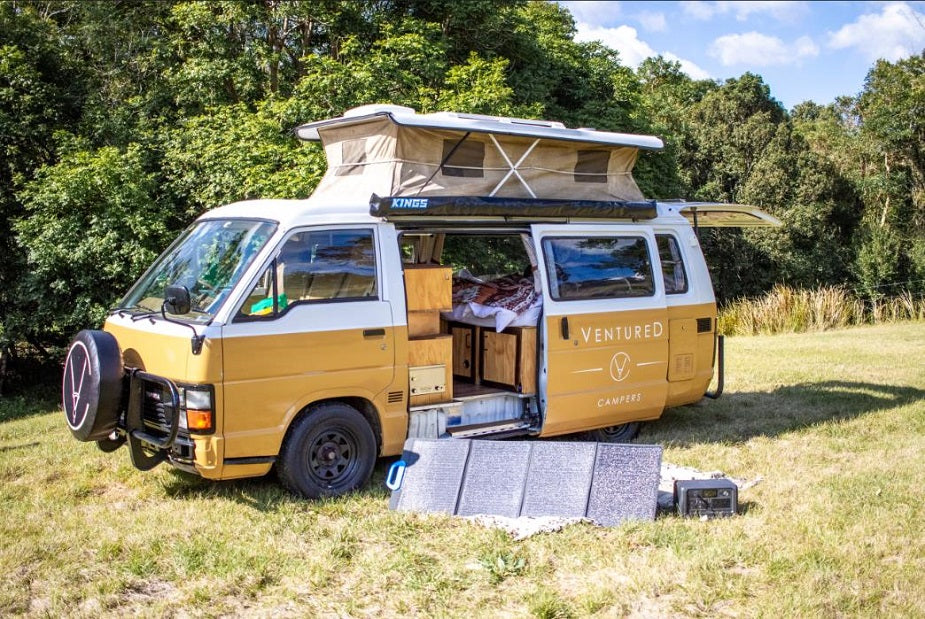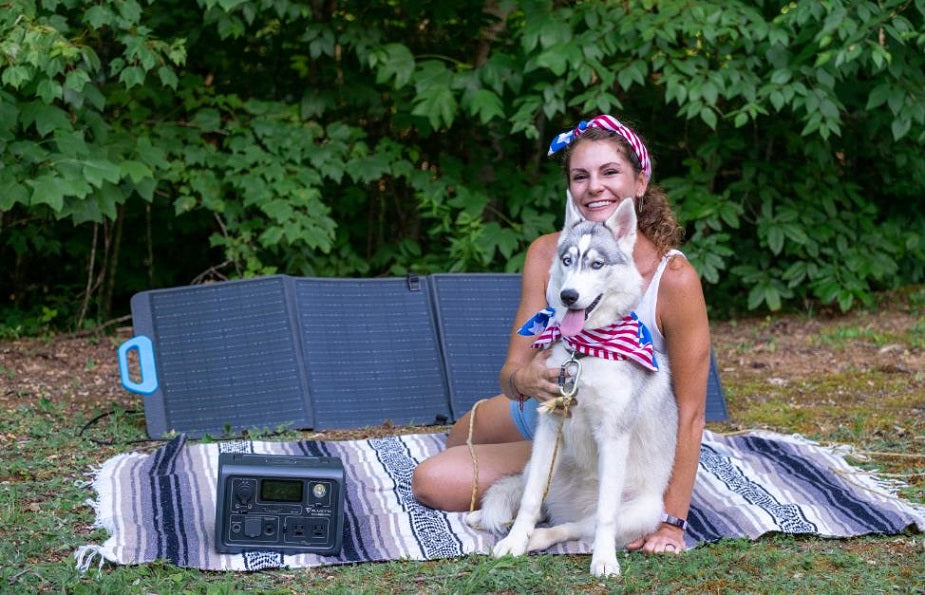
Camping is an incredibly popular outdoor activity that millions of Americans enjoy each year.
Most camping sites across the U.S. are equipped with most of your standard amenities, such as electricity and washing facilities.
However, there are some sites that are more off the beaten path and are not equipped with amenities, such as electricity.
Today, there is one way of getting around this slight "inconvenience," and that is by generating your own electricity.
This can be done via the use of solar panels.
The question is, just how much solar power do you really need for a camping trip?
How much solar power do I need for camping?

Calculating the amount of solar power you need can be worked out by following these 5 steps:
- Write down all the appliances you want to operate
- Look at each appliance’s “nameplate rating,” then add all the watt ratings.
- Estimate how many hours you want to operate each appliance
- Use the energy formula to get your total daily energy needs
- Multiply your daily energy needs by 365 to get your yearly energy requirements.
Step 1: Write Down Your Appliances
Quite a simple first step, just make a list of all the appliances you have in your cabin, here's an example below:
| Typical Appliances |
| Refrigerator |
| Laptop and Cellphone |
| LED Lights |
Step 2: Add Your Appliances Power Ratings
Next, you will need to establish your appliances power ratings. You can do this by simply looking at their nameplate ratings. This is often found at the back of your appliance on a sticker or plate.
| Typical Appliances | Rated (Running) Watts |
| Refrigerator | 100 W |
| Laptop and Cellphone | 100 W |
| LED Lights | 50 W |
| Total |
Step 3: Estimate The Operating Hours Of Each Appliance
Your next step is to figure out how long you aim to use each appliance for every day. This is an important step as it determines your energy consumption.
| Typical Appliances | Rated Power | Running Hours |
| Refrigerator | 100 W | 24 |
| Laptop and Cellphone | 100 W | 5 |
| LED Lights | 50 W | 5 |
| Total |
Step 4: Calculate Your Total Daily Energy Needs
Finally, we need to calculate energy consumption. This is very easy to do once you have your appliance power rating along with its usage time.
The formula is as follow: W x Time = Energy Consumption.
| Typical Appliances | Rated Power | Running Hours | Energy Consumption |
| Refrigerator | 100 W | 24 | 2400 |
| Laptop and Cellphone | 100 W | 5 | 500 |
| LED Lights | 50 W | 5 | 250 |
| Total | 250 W | 3,150 Wh |
We have some pretty good news though, heat regulating equipment such as AC's and refrigerators, consume much less power than their nameplate rating states.
This is largely due to the fact that they cycle on and off throughout the day, meaning they run at a much lower wattage.
Below is an updated table indicating the above information:
| Typical Appliances | Rated Power | Running Hours | Energy Consumption |
| Refrigerator | 100 W | 24 | 750 |
| Laptop and Cellphone | 100 W | 5 | 500 |
| LED Lights | 50 W | 5 | 250 |
| Total | 250 W | 1,500 Wh |
Step 5: Calculate your yearly energy requirements
To do this, simply multiply your daily energy consumption by 365 days.
1,500 (1.5 kWh) x 365 = 547 kWh per year or 45 kWh per month.
Now the questions remains, how much solar power will you need for a camping trip?

Well, that depends on where you aim to go camping. We have already established your energy requirements, now we need to establish how much peak sun hours your area receives in order to calculate what size solar system you need.
Let's assume you want to go camping California. In our experience, bringing along a 400 watt solar panel should be sufficient in offsetting your energy consumption demonstrated in the tables above.
But here's proof that this will be sufficient.
Based on data we pulled from the NREL, we can see the following energy production from a 400 W solar panel:
| Month | Solar Radiation
(kWh/m2/day)
|
AC Energy
(kWh)
|
|---|---|---|
| January | 3.47 | 34 |
| February | 4.08 | 36 |
| March | 5.20 | 50 |
| April | 6.32 | 58 |
| May | 7.47 | 69 |
| June | 8.24 | 72 |
| July | 8.15 | 73 |
| August | 7.83 | 70 |
| September | 6.80 | 60 |
| October | 5.63 | 52 |
| November | 4.11 | 38 |
| December | 3.31 | 33 |
| Annual | 5.88 | 645 |
As you can clearly see we will more than offset our energy consumption if we aim to camp during summer months. In fact we will produce a surplus of energy with a 400 W solar panel.
However, in winter months, we will be just under the required amount of 45 kWh a month.
One way to get around this is to add the storage capacity capabilities of a solar generator.
In doing this, you will be able to store any excess electricity generated during peak sunshine hours, which will be useable on days where the weather conditions are less favourable.
Final Thoughts
Working out how much solar power you need for a camping trip is really based on a case by case scenario.
Using the step-by-step guide above you can easily work out how much energy you aim to use each day.
Another important aspect of this calculation is knowing where you will be camping and figuring out how many peak sun hours that area receives.
You can use a website like Global Solar Atlas to get data on peak sun hours per location.







































































